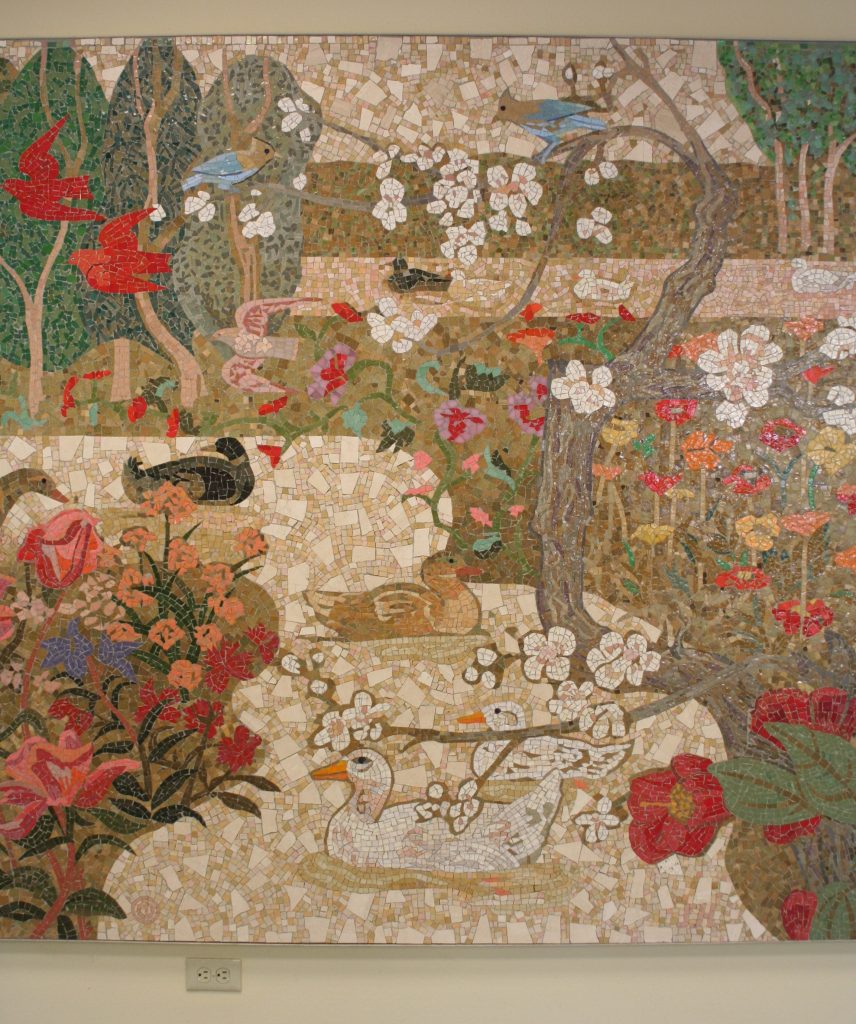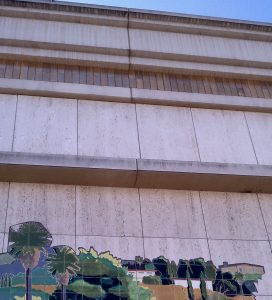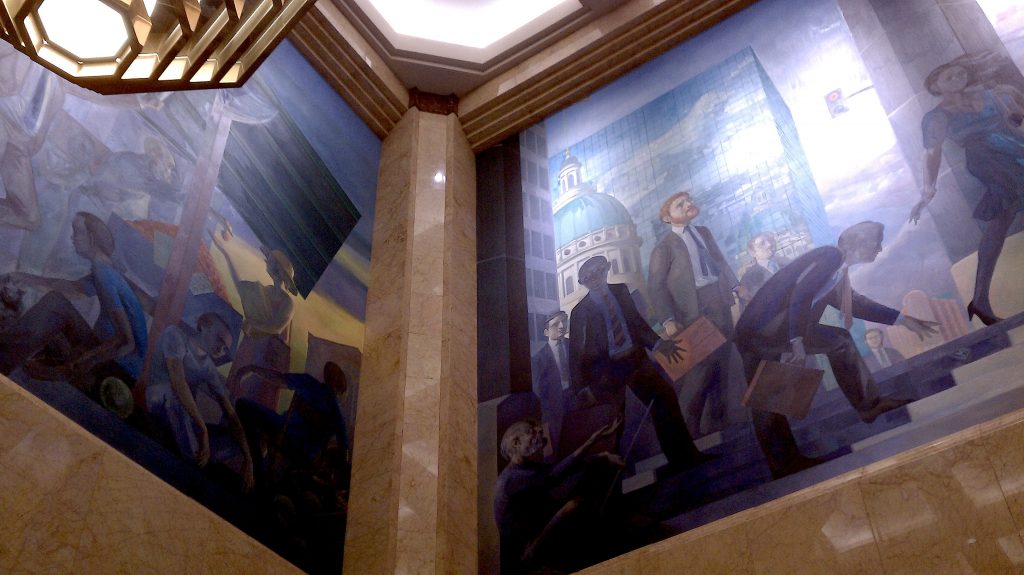In my last post, I discussed how we should measure the “lasts” of the Home Savings artworks. The Bartels and Preston tile mosaic I displayed is the last exterior work in California; today, the last interior work in California, by the longtime mosaicist of the series, Denis O’Connor. (As I mentioned last time, the very latest from O’Connor are in Illinois and Missouri — Berwyn, Evanston, and then Chesterfield, to be exact.)
I visited this mosaic on a day I had met with Denis’s son Kevin, and had a chance to see some of Denis’s later works and momentos of the decades spent working on projects for Home Savings. Kevin mentioned Denis’s frustration in some of his last projects, battling the difficulties of the mosaic craft, the troubles of older age, and the flagging enthusiasm for these mosaic works.
At the La Cañada branch, the diminution of the Home Savings works is evident: as the electrical outlet in this photograph suggests, the placement of this mosaic is happenstance, in the entry hallway to the bank, which does not have any of the other signals of Home Savings, like travertine facing.
The mosaic is much smaller than the average Home Savings artwork, and it was installed in a metal frame — ready to be carted away as needed, without the cost involved with removing the mosaics from cement and permanent walls, as would be required in most of the Home Savings locations. Rather than placed high overhead, the mosaic is at eye level, allowing a far more intimate examination of the craftsmanship and a tactile appreciation for the tiles, design, and methods.
I have not yet checked the relevant file at the Huntington Library, but I believe what Kevin told me, that the artwork is meant to echo the nearby Descanso Gardens, once again linking the bank to the community. The ducks, roses, and trees over streams in the mosaic match nicely with the images of the gardens available on their website.
Descanso Gardens are a bit of a hidden treasure–a preserve in the San Rafael Hills that held out against the post-WWII transformation of the LA Basin, and a park more muted than the region’s brashest and most well-known attractions. So too is this last Home Savings mosaic in California modest — but, in its intimate size and placement, a treasure worth the trip.




